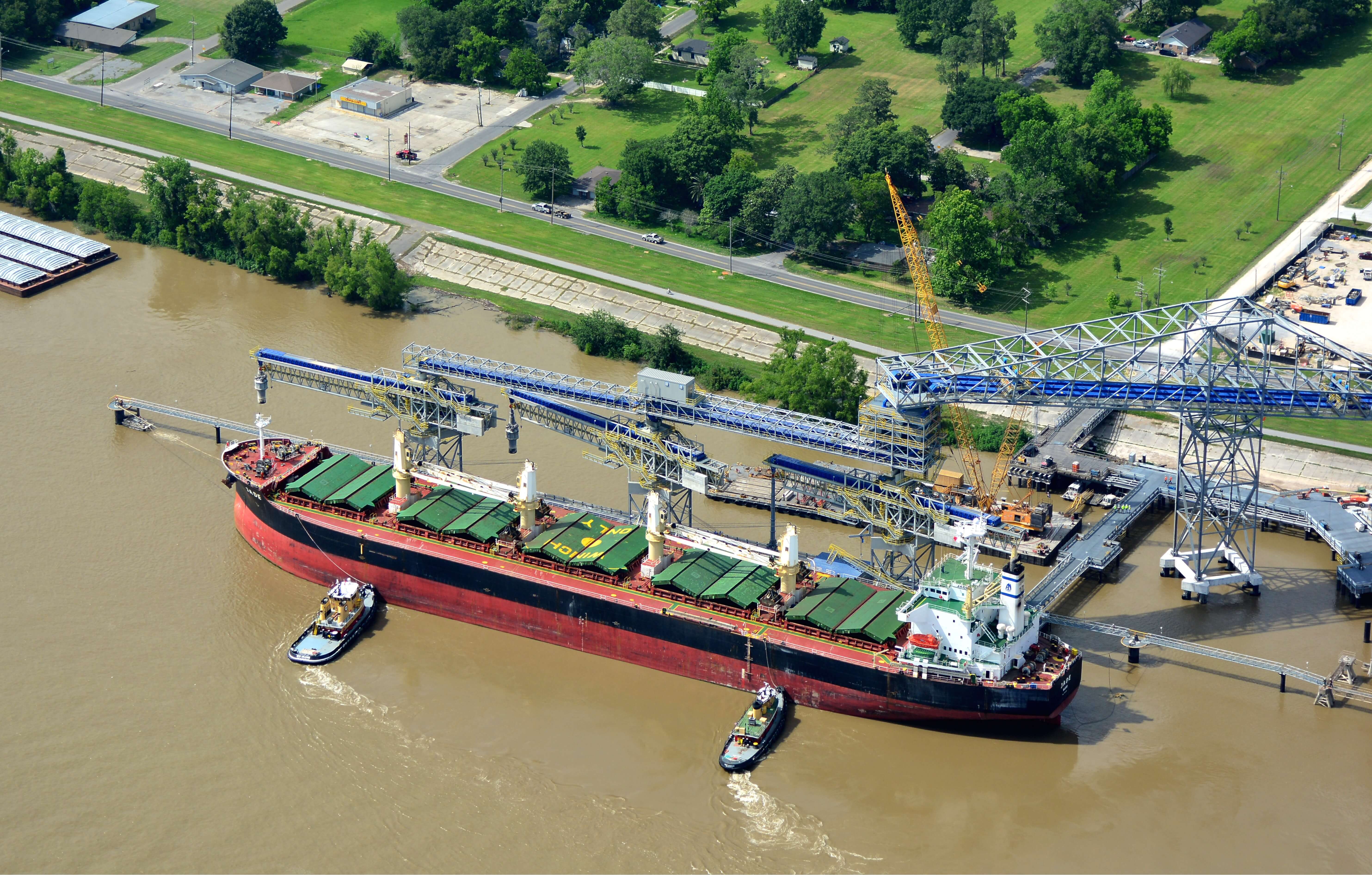What is a Bulk Terminal?
A bulk terminal is an industrial facility used to store large quantities of a product(s) before the product is transferred to another facility for processing or delivered to end-users. Terminals are designed with three main constraints in mind:
- Product to be stored
- Modes of transport in & out of the facility
- Throughput
Bulk terminals are often an important component of larger networks of pipelines, storage facilities and processing facilities. Let’s examine a few product examples to explore some of the ways bulk terminals provide critical infrastructure to a variety of industries.
Bulk Terminals for Crude Oil
Bulk terminals are especially important for energy companies. Large cargo ships deliver crude oil to the terminal. The oil is stored in tanks above or below ground. Then, the oil is delivered to a refinery. Terminals and refineries are often built close together so they can quickly move the oil for processing when needed.
After the oil is processed at a refinery, the refined product may be sent to another terminal. This terminal will blend the refined product to match customer specifications. From there, gantries will load the product into road tankers, rail tankers or barges. The oil can also be distributed through pipeline networks.
Bulk Terminals for Grain
Bulk terminals are also important in the grain industry where they are known as grain elevators. Most farmers sell their grain crops to a terminal known as a country grain elevator. This grain elevator location is determined by the farmer in accordance with what is most economical for them. The farmer personally delivers the grains to the country grain elevator via truck and where it is sold at an economical price.
The next step in the grain elevator chain is a regional or a river grain elevator. The grain is normally shipped to these terminals by rail or truck. These grain elevators have larger storage capacities and are able to transport grain by more efficiently via rail hopper cars that make up a unit train and/or river barges.
The unit train or river barges transport the grain to an export grain terminal located at a port where ocean going vessels berth. These grain terminals have the largest throughput capacities and typically operate year round.
These export grain elevators have the ability to blend different grades of grain to make a blend that meets the buyer’s requirements. The blended grain is then loaded on large ships that transport the grain to foreign
markets around the world.
Bulk Terminals for Cement
Bulk terminals also provide important distribution channels for cement. Terminals make it possible to deliver cement via barge, rail car or truck. These different modes of transportation offer flexibility to meet the needs of different customers. Barges, for example, are a cost-efficient way to transport very large volumes of cement quickly. Trains make it possible to transfer cement across long distances without traffic concerns. Trucking offers fast and flexible options for growing markets that may not be able to justify the cost of larger capacity solutions.
As you can see from the examples above, bulk terminals play an important role in industrial infrastructure. For many industries, these facilities keep critical resources moving safely and efficiently.
